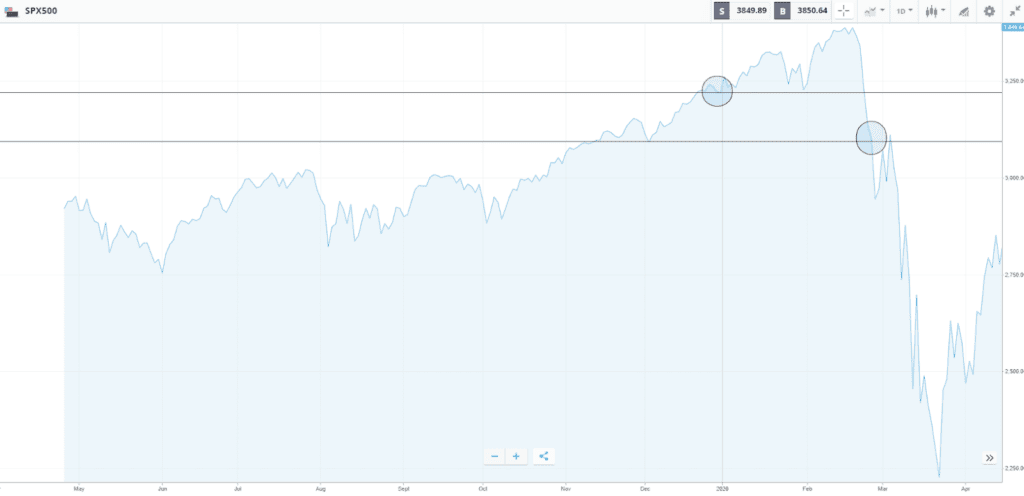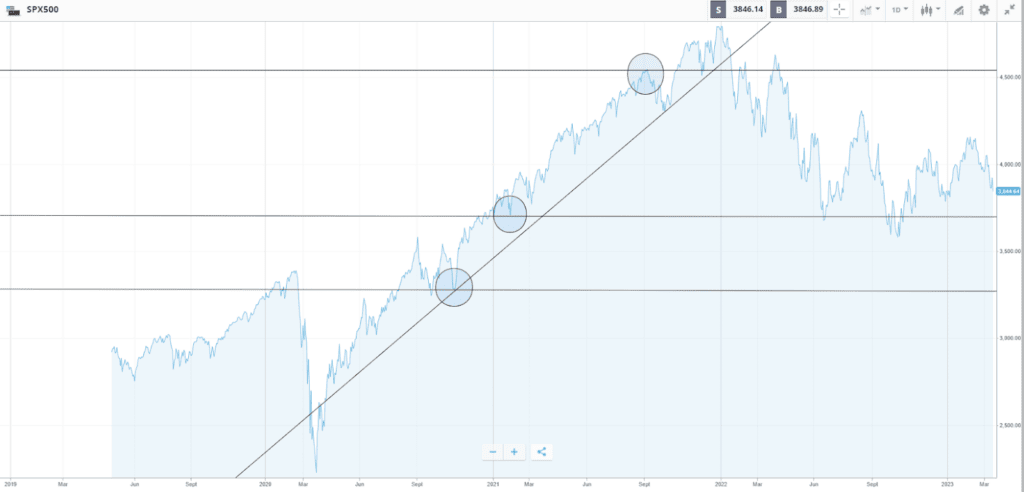Whatever you’re considering investing in, Stop-Loss and Take Profit orders are among the best ways to manage your open positions and your exit strategy. They form the cornerstone of an effective risk management strategy and can help you to optimise your returns.
Stop-Loss and Take-Profit orders allow you to manage trading positions without having to constantly watch the markets. They also help you to limit your losses and lock in gains.
Learning how these types of orders work, and how to get the most out of them, can make your trading experience more user-friendly and benefit your overall investment strategy.
You decide the price levels at which to set your Stop-Loss and Take-Profit orders, and they can be adjusted at any time.
What are Stop-Loss and Take-Profit orders?
Stop-Loss and Take-Profit orders are trading features that instruct your broker to automatically reduce the size of a

A Stop-Loss order is used as a risk management tool. If a position you are holding falls to a predetermined level, some, or all, of your position will be closed. This caps your losses at an amount you are comfortable with, while protecting
On the other hand, Take-Profit orders are primarily about protecting gains. When a winning position reaches a target price, a percentage of it will be closed. This converts
How can Stop-Loss strategies help to minimise risk?
Stop-Losses can instil an additional degree of discipline into trading behaviour and help to avoid emotional investing by encouraging investors to identify clear entry and

As Stop-Loss and Take-Profit orders are triggered automatically, investors will be less tempted to micromanage their portfolios and will be less likely to miss opportunities because of distractions. These orders should also, in theory, help to avoid making rushed decisions based on short-term price fluctuations.
How to set Stop-Loss targets
The level at which you set your Stop-Loss order should be based on how much you are willing to lose on a trade. This will, in turn, be influenced by your
For example, some investors will want to cap their losses at 10% and would, therefore, set their Stop Losses accordingly. Alternatively,

For illustration purposes only. Past performance is not an indication of future results
Source: eToro
Some investors decide to implement a Stop-Loss just below a
How do Take-Profit strategies work?
Take-Profit strategies help to ensure profitable trades keep posting returns. Banking profits is often a good idea, and having predetermined exit points helps to ensure that you’re not influenced by your emotions when prices fluctuate.

As with Stop-Losses, Take-Profit orders can be set at levels from which they post a percentage, or monetary, value gain. Technical indicators, such as Fibonacci retracement levels and

For illustration purposes only. Past performance is not an indication of future results
Source: eToro
Take-Profit orders put a cap on the potential upside of a trade. If your strategy changes, and you decide to remove a Take-Profit order to allow your winning trade to progress, then you can still avoid making a loss on your trade by setting up a Stop-Loss at the trade’s breakeven point.
Setting your own risk ratio
To work out your risk ratio, divide your target net profit by the amount of capital you are willing to risk. In terms of the features mentioned above, this would be the total cash gain from a triggered Take- Profit, divided by the total loss seen if your Stop-Loss is activated.
Many investors won’t consider risk-reward profiles of less than 2:1 — risking $1 to win $2, for example. Although this may seem conservative, it encourages a more disciplined approach that allows you to figure out your plan for riding out
To use the example above, if you wanted to invest $500 and had a risk-reward profile of 2:1, you could consider setting your Take-Profit at $1,000 and your Stop-Loss at $250. If the Take-Profit was triggered, you would have $500 in realised profit. If your Stop-Loss was activated, however, the value of your position would be $250 less than when you opened it.
Final thoughts
Stop-Losses and Take-Profit orders are popular with traders and investors running short-term strategies and multiple positions at once. They also suit those who don’t want to monitor their portfolio’s every move.
As well as managing risk, these automated orders also offer the benefit of helping move your focus away from the process of trading and “screen-watching”. That helps instill more discipline into trading, removes the risk of psychological biases influencing your decision-making, and brings the focus back to the core reason for investing – making returns.
Visit the eToro Academy to find out more about how using Stop-Losses and Take-Profits can optimise your returns.
FAQ
- What is a trailing Stop-Loss?
-
A trailing Stop-Loss is a type of trade instruction that moves your Stop-Loss level in line with the market price, if the position you hold becomes profitable. Trailing Stop-Losses can only move in one direction, so they do not move backwards if the price of an asset reverses.
- Are Stop-Losses guaranteed?
-
A Stop-Loss is not guaranteed. When the market is volatile, or if the market you are trading is closed overnight, then the price level at which you set your Stop-Loss might not be traded in the market, and prices can “gap.” In this case, the Stop-Loss will trigger at the next available rate.
- Are there times when I shouldn’t use Stop-Loss, Take-Profit orders?
-
Stop-Losses can be triggered by short-term price moves and create losses on a position that would potentially see a positive price movement. On the other hand, Take-Profits act as a cap on potential upside. Investors who adopt a buy-and-hold approach might decide not to use Stop-Loss and Take-Profit features to avoid short-term moves impacting their long-term investment plan.
- What is a Stop Order?
-
A Stop Order, sometimes called a Stop-Entry Order is an order placed with your broker to automatically open a new position at a predetermined price which is at a level which is worse than the current market price.
Stop Orders can be used by investors who are trying to be patient about entering into a trade at an optimal level, but at the same time wouldn’t want to miss out on an opportunity if price begins to move away from them. Stop Orders relate to opening new trades and are not to be confused with Stop-Loss orders which are a risk management tool which closes out positions.
This information is for educational purposes only and should not be taken as investment advice, personal recommendation, or an offer of, or solicitation to, buy or sell any financial instruments.
This material has been prepared without regard to any particular investment objectives or financial situation and has not been prepared in accordance with the legal and regulatory requirements to promote independent research. Not all of the financial instruments and services referred to are offered by eToro and any references to past performance of a financial instrument, index, or a packaged investment product are not, and should not be taken as, a reliable indicator of future results.
eToro makes no representation and assumes no liability as to the accuracy or completeness of the content of this guide. Make sure you understand the risks involved in trading before committing any capital. Never risk more than you are prepared to lose.


